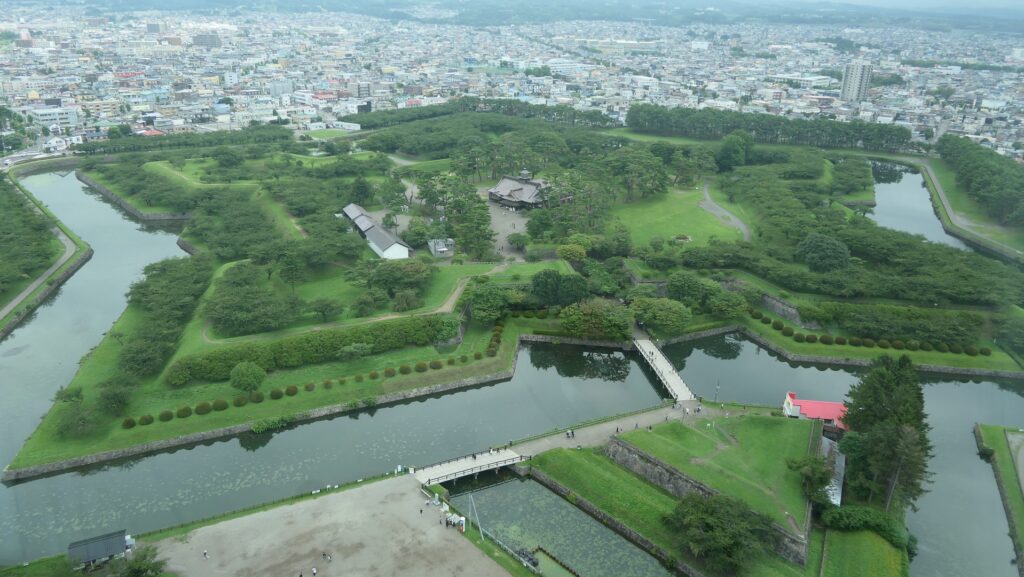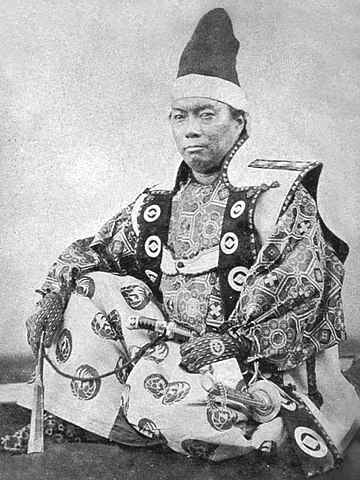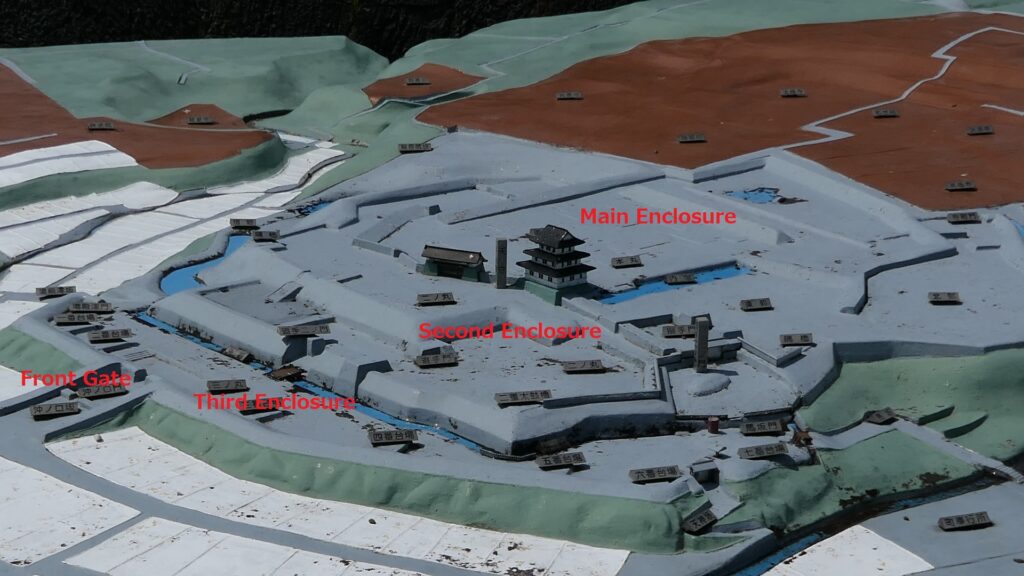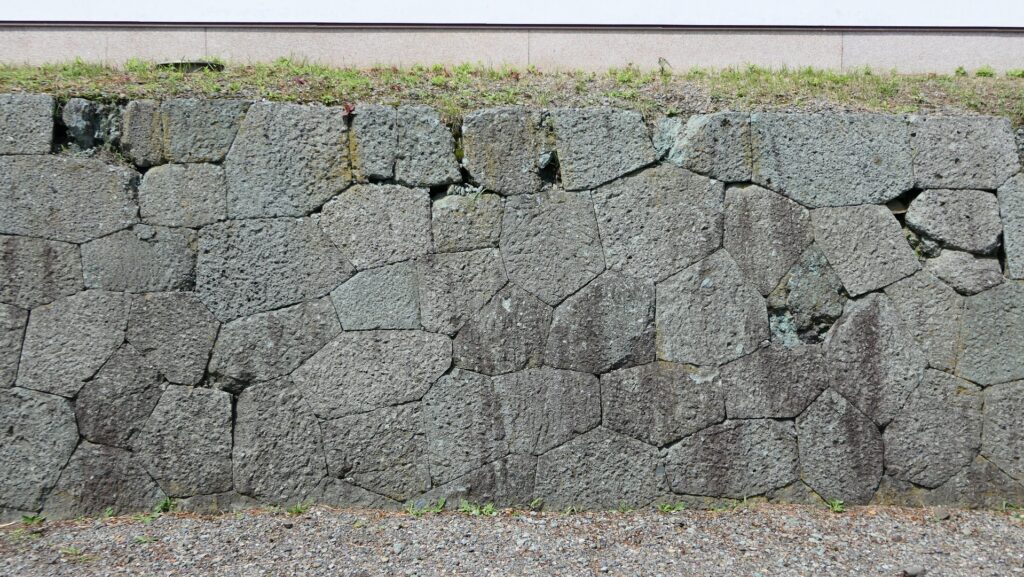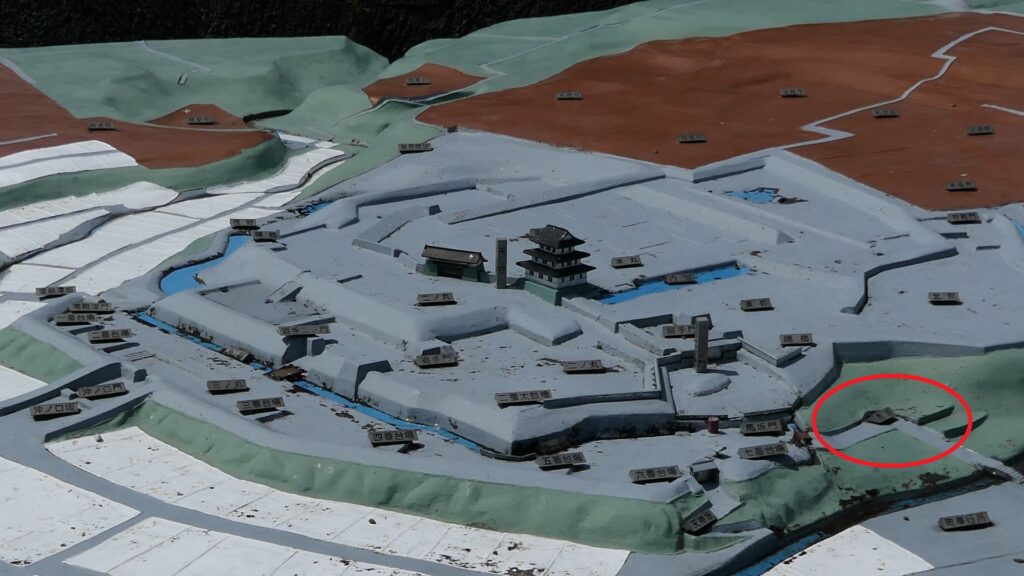Location and History
European style fort, located in Hakodate
Goryokaku was one of the earliest European style forts in Japan and the site of a major event during the Meiji Restoration. It is also one of the most famous symbols of Hakodate City in Hokkaido. In 1854, Japan opened the country to several Western Countries such as the US through the Shimoda and Hakodate Ports. The Tokugawa Shogunate, which was the Japanese Government at that time, decided to take direct control of Hakodate port and built the Hakodate Magistrate’s Office to control the relationship with the aforementioned countries. The office was first located near the port at the foot of Hakodate Mountain. However, some argued that its location was not good for security because the office might be attacked from both the sea and mountain sides. Because of that, the shogunate built the Benten Cape Battery beside the port and moved the office to an inland area, about 3km away from the port, where it was thought it would provide protection from shots from canons of the Western ships.
The location of the castleThe person in charge of both constructions was Ayasaburo Takeda, a scholar of Western science. He learned a lot from military books and designed the office to be a European style fort, with five bastions like a star. He also planned to add five ravelins between the bastions, but only one was built in the front, probably because of a lack of budget. The new fort was completed in 1864 and called Goryokaku, which means the Pentagonal Style Fort. Its style came from Europe while the techniques used in the construction were traditionally Japanese. The basic five pointed star shape was made of soil, partly using stone walls. Some of the stone walls had a feature called “Hanedashi” in which all the stones in the second row from the top are so layered to prevent enemies from invading. Water moats were dug outside the structures. The office buildings were built inside in the Japanese style.
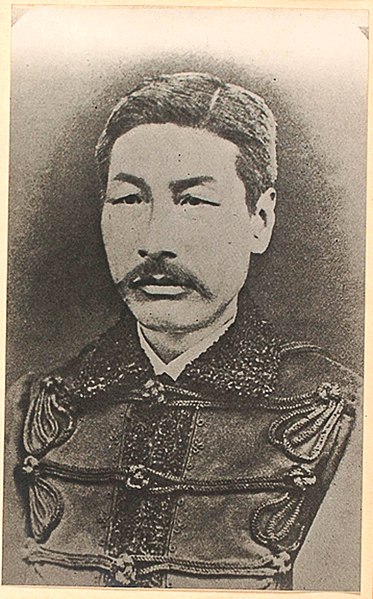
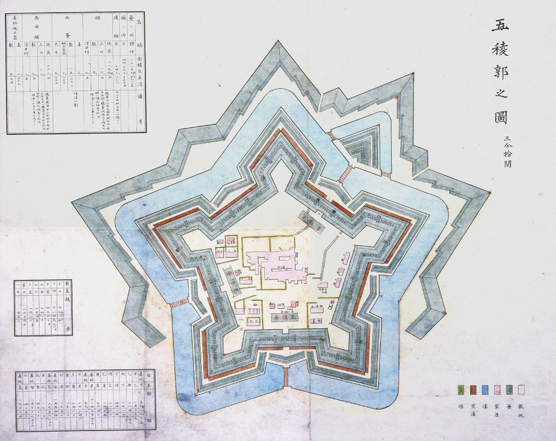
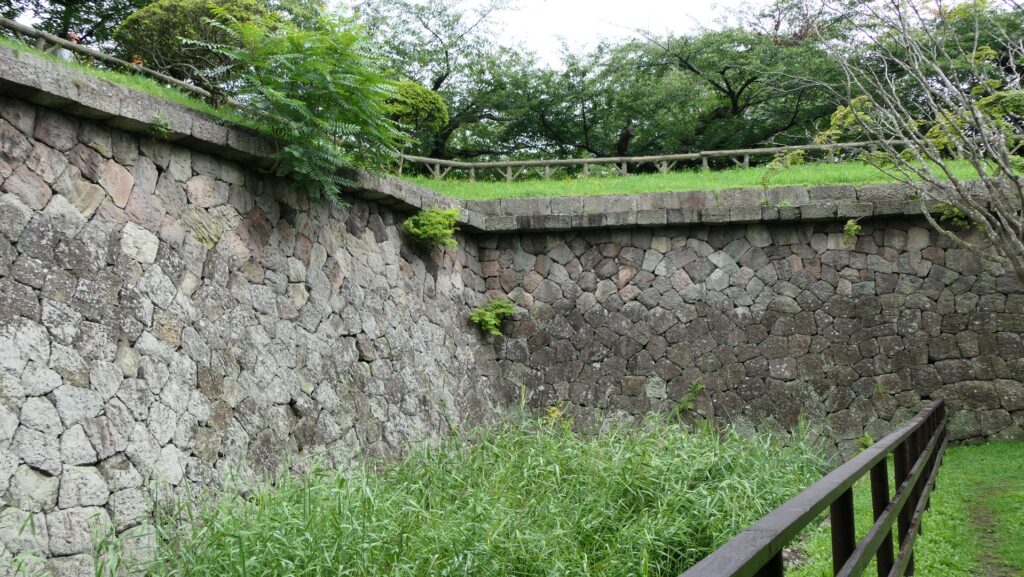
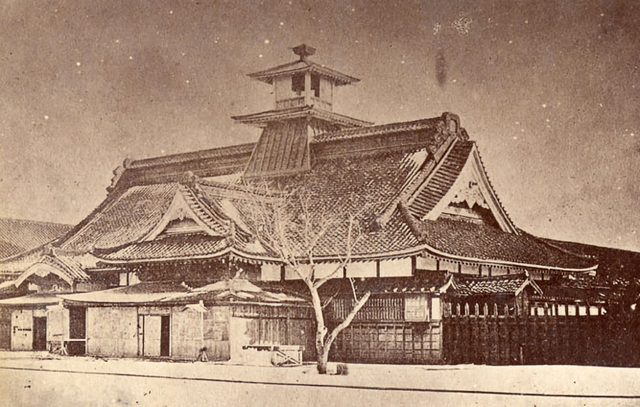
Escaping force occupies Goryokaku
In 1868 when the Meiji Restoration occurred, Goryokaku, including the magistrate’s office, was first handed over to the new government peacefully. However, the former Shogunate fleet, led by the deputy Admiral, Takeaki Enomoto, escaped from Edo Bay to Hokkaido looking to found their own government. They brought nearly 4,000 soldiers, excellent commanders like Toshizo Hijikata, and the strongest battleship, the Kaiyo. The new government officers left Goryokaku and withdrew to the mainland of Japan, so the escaping force occupied Goryokaku easily and set it as their home base. They also captured other castles in southern Hokkaido, such as Matsumae Castle. They finally declared independence from the new government, which was never accepted. A bad sign for the escaping force was that the Kaiyo had become stranded on a reef at Esashi and sank in the previous battle.
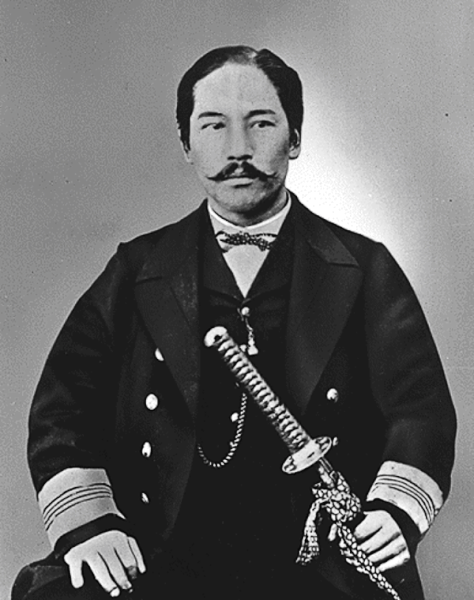
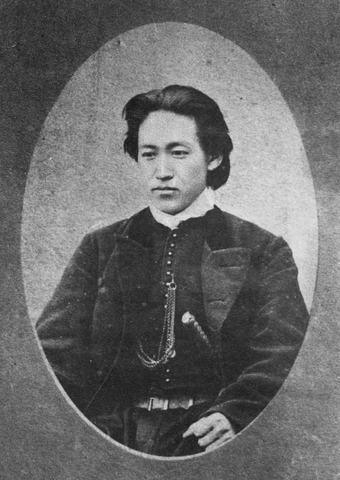
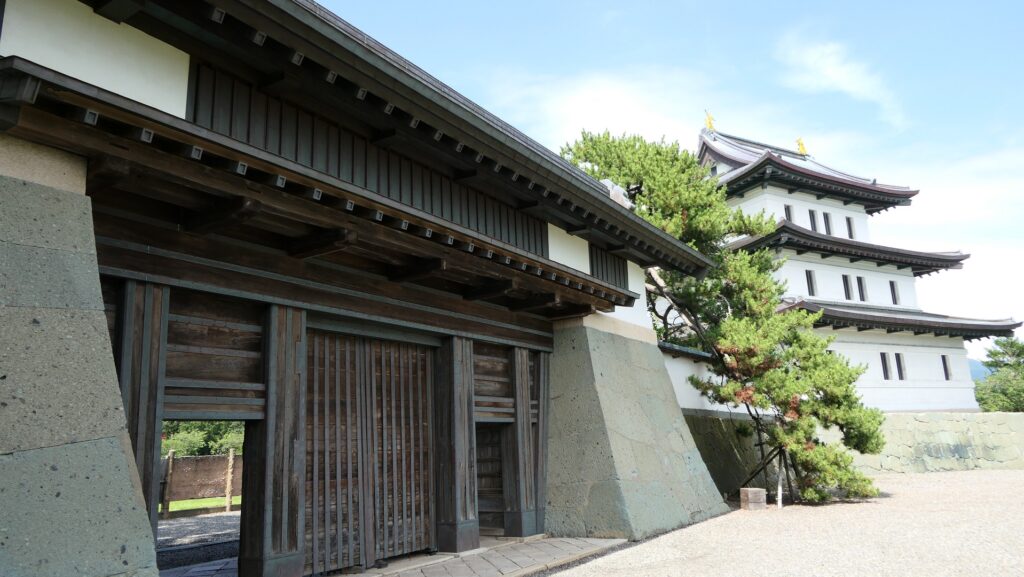
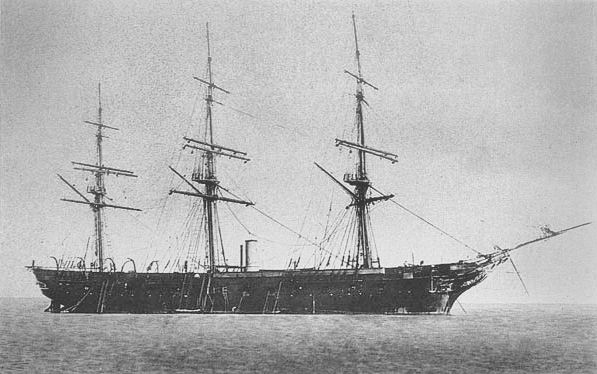
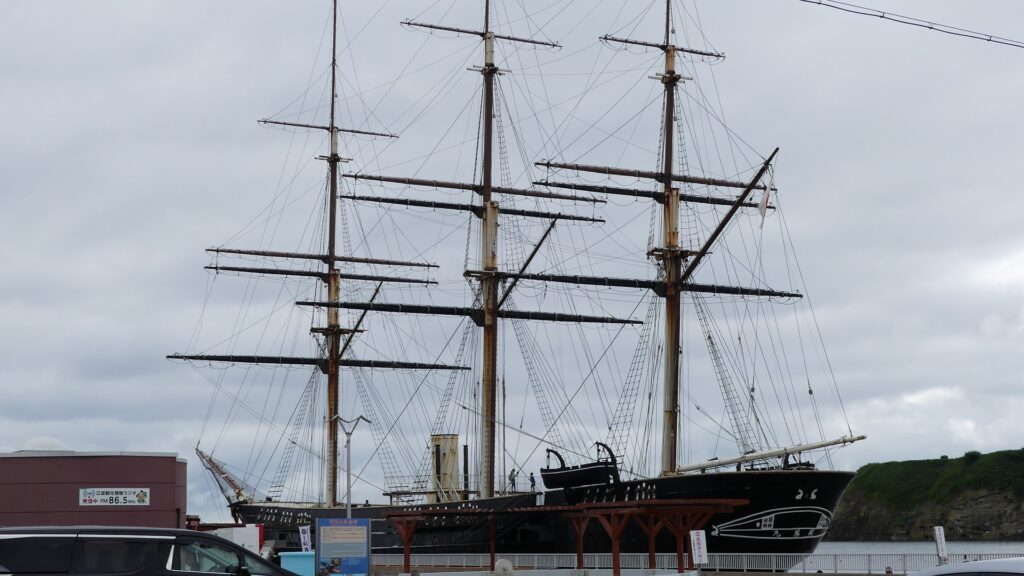
Goryokaku is open by Attack of New Government Army
The new government prepared over 10,000 soldiers and its own fleet, including the Kotetsu, thought to be the strongest after the Kaiyo, led by Kiyotaka Kuroda. The escaping force fortified Goryokaku and built another European style fort called Shiryokaku or the Square Style Fort. The new government forces invaded southern Hokkaido in 1869. They had more soldiers and were more equipped than the escaping force, which resulted in Matsumae Castle and Shiryokaku being captured immediately. The Benten Cape Battery and the remaining escape force fleet fought hard against the new government fleet in Hakodate Port. They even got one of the new government ships, the Choyo sunk. However, they had to surrender because their supplies ran out. Hijikata was also killed by a shot when he was trying to help them. Goryokaku was isolated.
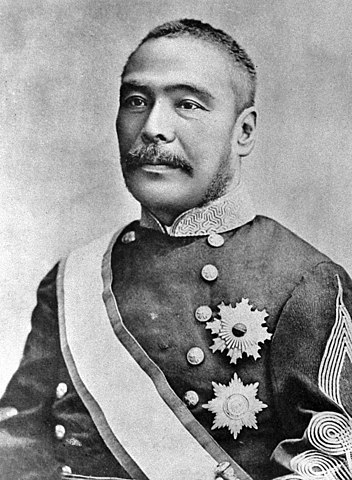

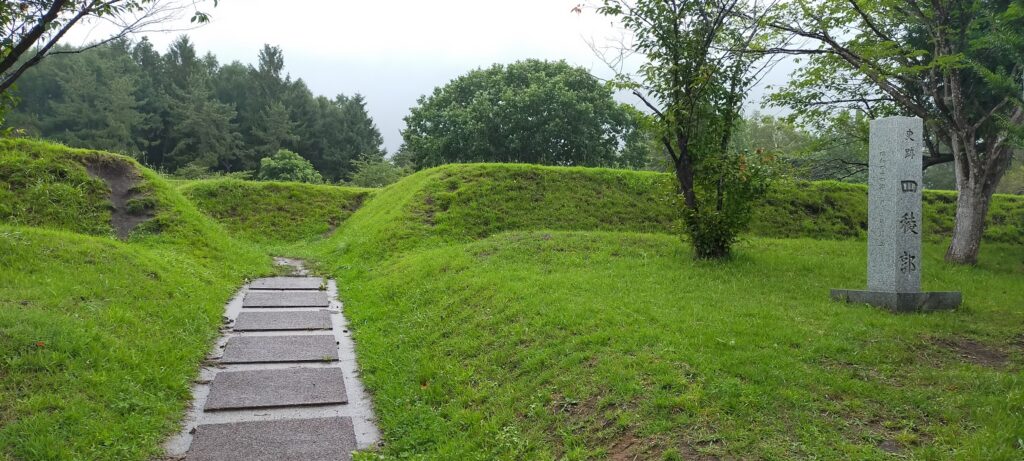
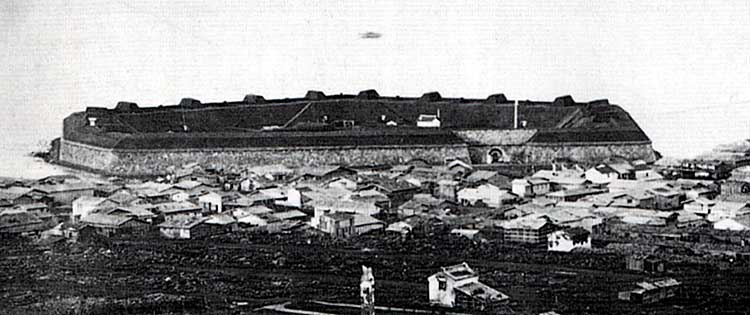
The cannon shots from Goryokaku didn’t reach the fleet. On the other hand, the shots from the Kotetsu easily hit Goryokaku because the quality of cannons had rapidly improved. It is said that the copper roof tiles on the drum tower of the magistrate’s office were targeted. Enomoto finally accepted the suggestion of surrender from Kuroda. These battles are called the Battle of Hakodate and considered to be the event that the completed the establishment of the new government.
